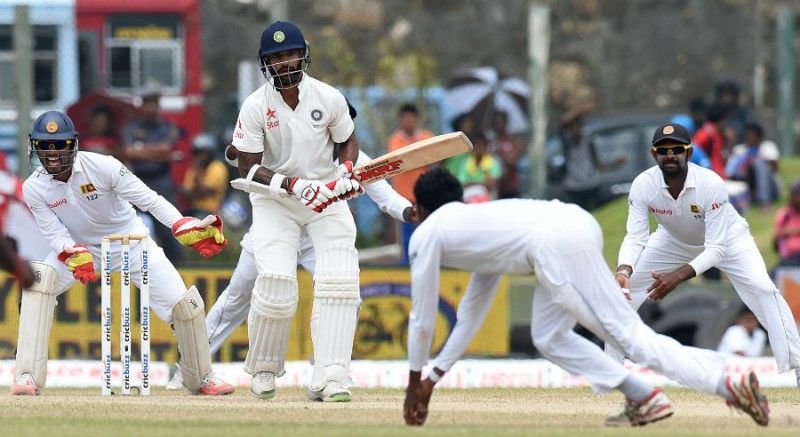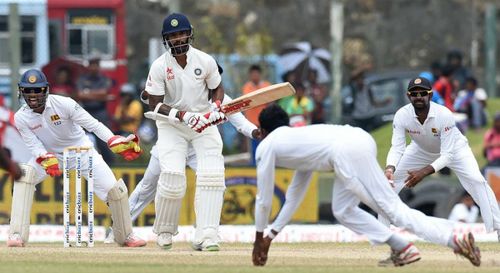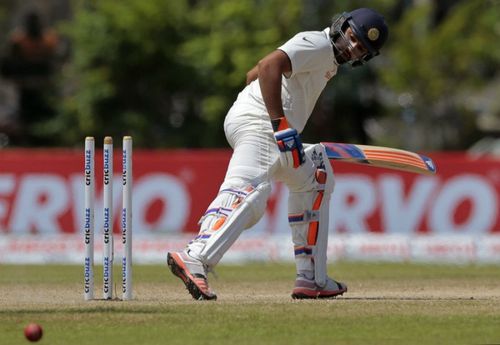
Indian cricket team: Defining contradiction in Galle

The morning of the Independence Day (celebrated in India, decimated in Galle) was a contradiction to all the “fearless” and “positive cricket” claims from the captain and team management both before and after the Test match (read debacle).
There was nothing positive and fearless in the 35 dot balls that Shikhar Dhawan faced at the start of the session, only for the 36th to go for an inside-edged boundary. Let’s be clear - fearlessness is not to be confused with naïve swashbuckling of the red Kookaburra; but understanding it as sensible cricket and not surrendering to the opposition when the bowlers are hitting inch-perfect marks on the pitch and fielders surrounding are grabbing everything thrown their way (see Kaushal’s catch of Dhawan for proof).
The positive strategy was supposed to win the team matches, in fact the excessively negative approach ended up costing the team a much-awaited away Test win. Mind me, there was nothing sensible about India’s strategy at all, starting the first day.
It might have been eclipsed by some performances of the superlative degree from R Ashwin, Shikhar Dhawan, Virat Kohli (considerable mention – Rahane with the safest pair of hands, and Ishant Sharma with a persistent line and length), but the 5-bowler strategy would not have worked with the personnel in the team if not for the aforementioned. Rest – they underperformed.
The number 3 conundrum
Any conversation about underperformance in cricket is incomplete without Rohit Sharma – the supposed future No. 3 with his unutilized bags of talent which he leaves in the dressing room when stepping out on the field.
The only notable thing he did was take a sharp reflex catch of Angelo Mathews standing at short leg. Rest, he was an epitome of consistency – leaving the side in a spot of bother like he usually does. We have grown-up watching the Wall at number 3, it is difficult to transition to watching a crooked brick taking guard at 1-down.
That is mostly where the strategy was flawed – giving yet another chance to a player at a critical number 3 position, when the team is already short of consistent Test batsmen (Don’t forget - M. Vijay was also not in the side). Let’s ask ourselves – Before the match began, weren’t we relying heavily on Rahul, Kohli, and Rahane to get the team runs; weren’t we scared that if any of the top six failed to score, we would be in a big trouble?
We knew beforehand – that is how essential it was for the specialist batsmen to get us runs. To all our happiness, some of them did, after the bowlers (minus Harbhajan Singh) put on a brilliant effort to wrap the Sri Lankan first innings for less than 200 runs. Much to our disappointment, they couldn’t replicate it in the second innings and the result is for everyone to see.

The positive thought was right, but the strategy was bad and the execution even worse. Captain Kohli might want to go back to the drawing board and assess the importance of all the 6 batsmen and 5 bowlers to perform (out of which 1 will always be under-bowled) to get a result which doesn’t read “India lose an away Test” again.
Roles need more clarity
There needs to be steel in the top-order, and the match is all but gone if there are no big scores from the top order. Can team India expect Rohit Sharma to score big? If it were a video game he would have run out of respawns, and international cricket is no video-game.
There is also a need to underline the job description of the fifth bowler and recruit accordingly. Harbhajan Singh wasn’t even a shadow of himself and the next in line (whoever he is), needs to be explained the role better – which ideally should be that of short spells and tightening the screws on the opposition.
Followed by revisiting the strategy, comes the execution. To all the bravado, there has to be some sensibility and logic to approach the game. The good news is – the captain knows that. “I think we should have been smarter batting against the spinners,” admitted Kohli after the match.
He also needs to understand that player selection is key for the “smart” cricket to materialize. If not done right, the game can turn on its head, the way it did post-lunch on the third day in Galle. What could have been a ground-breaking victory for captain Kohli, boomeranged into an agonizing defeat for the team. The captain fell short on setting up a team that could endorse the fearless brand of cricket, and the players failed him.
Turns out, it was Dinesh Chandimal in the opposition camp, who ended up taking notes from the ‘Fearless and positive cricket’ class of Virat Kohli and Ravi Shastri.